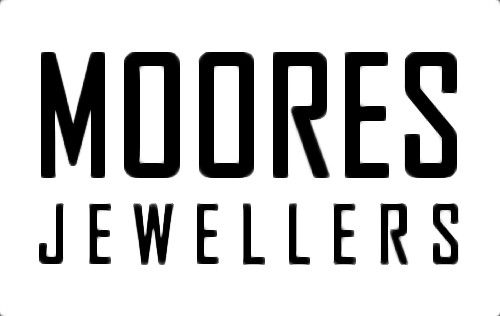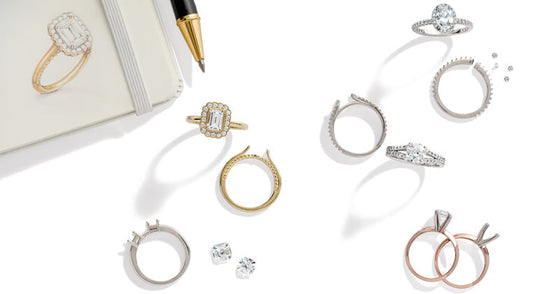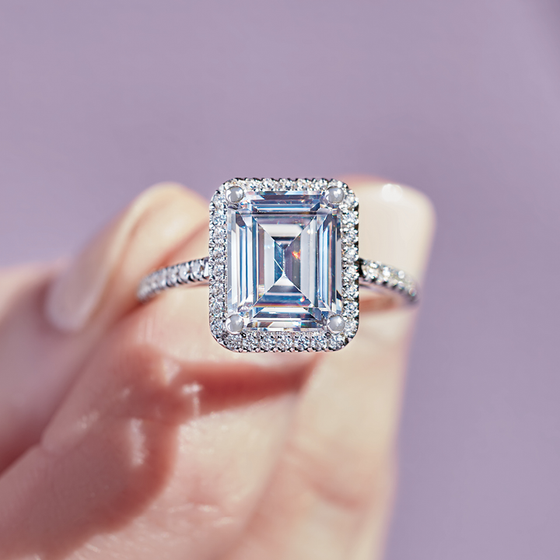Ring Size and International Conversion Chart
Measuring a finger size for a ring can be surprisingly complex. Below we highlight some of the common issues that arise and provide a chart of some of the more common international sizing systems.
Many countries and regions use their own ring size chart. Here is a list of some of them. These are approximate comparisons as many of the sizes from one region have no exact corresponding size from another - however, the differences will be very minor.
Some things to remember:
- Your finger will change size depending on a number of factors.
- Your finger will get bigger:
- when you are hot
- when you are active
- when your blood pressure is higher
- Your finger will get smaller:
- when you are cold
- when you are inactive
- when your blood pressure is lower
- Ring sizes are very small. Here in Ireland, a full ring size is less than 1.5mm in diameter and there are also half sizes. In fact, we often see customers who are wearing rings that are a number of sizes too large or small and are unaware of it. This poses a problem when an existing ring is used for ascertaining a person's ring size.
- Getting measured by a Jeweller is strongly advised. Due to the very small margins for error in ring sizing and the various complicating factors, it is advisable to have a jeweller perform a ring sizing.
- The fingers on each hand are often different in size and sometimes there can be 2-3 sizes between the same finger on the left and right hand.
- Certain styles of ring are harder to adjust in size then others and some are close to impossible to adjust. Rings with complex patterns, certain types of material (ceramics, wood, titanium, etc.) and with complex and delicate stone setting (particularly on the shoulders) can very difficult, expensive or impossible to size.
- Rings have different profiles and this can affect sizing. Certain rings have flat internal surfaces and others have domed shaped internal surfaces(often called Court or Comfort Fits). In the former, the leading edge of the ring is usually used to measure the size and for the later, the centre of the ring (the point at which the ring is narrowest) is used.
- The width of the ring or whether the ring is being worn with other rings will also need to be considered in regards to sizing. Wider rings, particularly those from 7-9mm and up will often have a bunching effect of the finger and may need to be worn half a size larger than a narrower ring. The same is often the case when two or more rings are worn together.
- Rings should have a moderate amount of resistance to coming over the knuckle. While we don't want rings to be too tight we also don't want a ring to be able to slide off the wearer's finger without any resistance - particularly on a cold day.
|
INSIDE DIAMETER |
USA | UK & IRELAND | GERMANY | SPAIN | FRANCE | ITALY | JAPAN |
|---|---|---|---|---|---|---|---|
| 14 mm | 3 | F | 44 (14.0) | 4 | 44 | 4 | 4 |
| 14.5 mm | 3.5 | G | N/A | N/A | N/A | 5,5 | 5 |
| 15 mm | 4 | H | 47 (15.0) | 6,5 | 46.5 | 7 | 7 |
| 15.3 mm | 4.5 | I | 48 (15.3) | 8 | 48 | 8 | 8 |
| 15.6 mm | 5 | J | 49 (15.6) | 9,5 | 49.5 | 9 | 9 |
| 16.2 mm | 5.5 | K | 51 (16.2) | 10,5 | 50.5 | 10 | 10 |
| 16.6 mm | 6 | L | 52 (16.6) | 12 | 52 | 11 | 11 |
| 16.9 mm | 6.5 | M | 53 (16.9) | 13,5 | 53 | 12,5 | 13 |
| 17.2 mm | 7 | N | 54 (17.2) | 14,5 | 54.5 | 14 | 14 |
| 17.8 mm | 7.5 | O | 56 (17.8) | 16 | 55.5 | 15 | 15 |
| 18.1 mm | 8 | P | 57 (18.1) | 17 | 57 | 16 | 16 |
| 18.5 mm | 8.5 | Q | 58 (18.5) | 18,5 | 58 | 17,5 | 17 |
| 19.1 mm | 9 | R | 60 (19.1) | 20 | 59.5 | 19 | 18 |
| 19.4 mm | 9.5 | S | 61 (19.4) | 21 | 61 | 20 | 19 |
| 19.7 mm | 10 | T | 62 (19.7) | 22,5 | 62 | 21,5 | 20 |
| 20.4 mm | 10.5 | U | 64 (20.4) | 23,5 | 63.5 | 23 | 22 |
| 20.7 mm | 11 | V | 65 (20.7) | 25 | 64.5 | 24 | 23 |
| 21.0 mm | 11.5 | W | 66 (21.0) | 26 | 66 | 25 | 24 |
| 21.6 mm | 12 | X | 68 (21.6) | 27,5 | 67 | 26,5 | 25 |
| 22.0 mm | 12.5 | Y | 69 (22.0) | 29 | 68.5 | 28 | 26 |
| 22.3 mm | 13 | Z | 70 (22.3) | 30 | 69.5 | 28,5 | 27 |
| 22.9 mm | 13.5 | Z+2 | 72 (22.9) | 32 | 71 | 32 | N/A |
| 23.2 mm | 14 | Z+3 | 73 (23.2) | 33 | 72.5 | 33 | N/A |
|
23.6 mm |
14.5 | Z+4 | 74 (23.6) | 34,5 | 73.5 | N/A | N/A |
| 15 | Z+5 | N/A | 35 | 75 | 35 | N/A |




